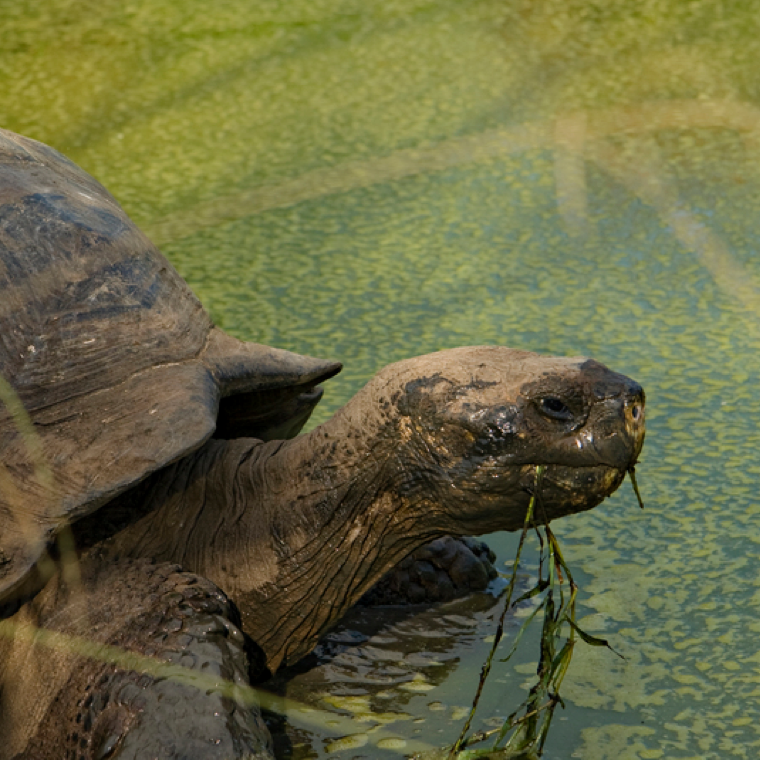I'm fascinated by turtles! First of all, I've always been amazed by their cartilaginous shells that act as shields for their protection. It has been determined by scientists that the earliest known turtles date from 220 million years ago which makes these creatures one of the oldest reptile groups, antedating lizards, snakes and crocodiles. It's no wonder then that my trip to Santa Cruz Island in the Galapagos archipelago left me with mental images that are hard to forget.
Charles Darwin Research Station
After paddling in our dinghy from our ship to the island shore, our first stop was the Charles Darwin Research Station. Located in Puerto Ayora, Ecuadorian and foreign scientists have worked at this site to investigate the biological principles that govern the ecosystems on this island. As turtles have been an endangered species, research has been ongoing as to how to manage and preserve these creatures.
Tortoises fornicating from the wrong end
At the research station we came upon a sight that invokes a chuckle in me every time I think about it. A male had mounted a female tortoise in the act of fornication. That in itself wouldn't be unusual. However, our guide pointed out that the male had approached the female from the wrong end! Admittedly, I'm not a zoologist. However, I have trouble understanding how these reptiles have been able to procreate successfully over the last 220 million years. No wonder they are on the endangered species list!
The next stop was on Tortuga Bay where we were introduced to the gigantic Galapagos tortoise. The Chelonoidis Nigra is the largest living species of tortoise and 13th-heaviest reptile extant in the world. These reptiles can weigh up to 550 pounds with life spans in the wild of over 100 years. They are lazy creatures with slow metabolisms that can nap up to 16 hours a day.
Galapagos giant tortoise
Charles Darwin was highly impressed with these giant tortoises and his study of them contributed to the development of his theory of evolution. My own observation is that the majority of tortoises must figure out how to fornicate properly or they'll never make it through another 220 million years!




